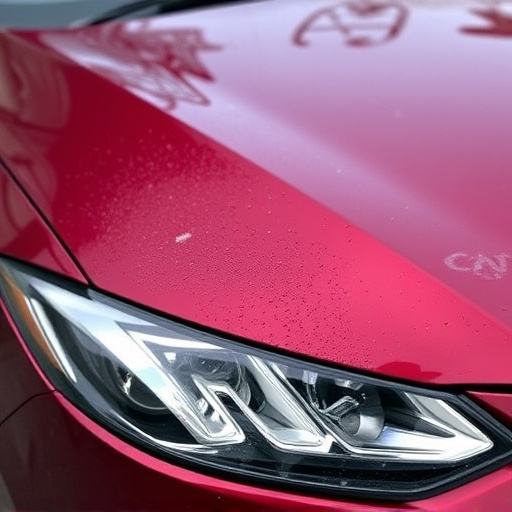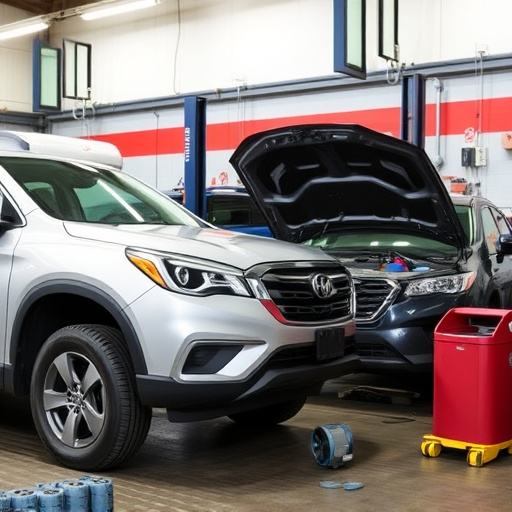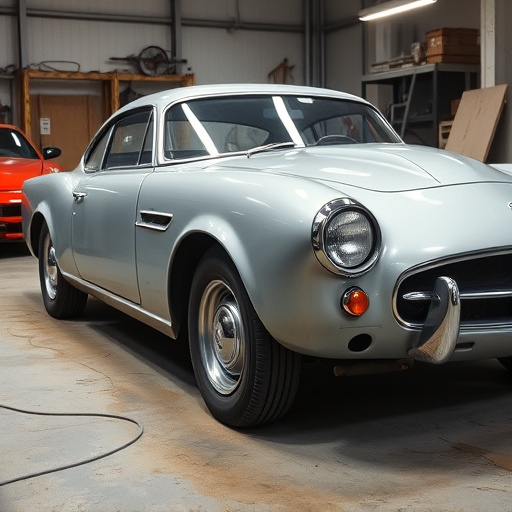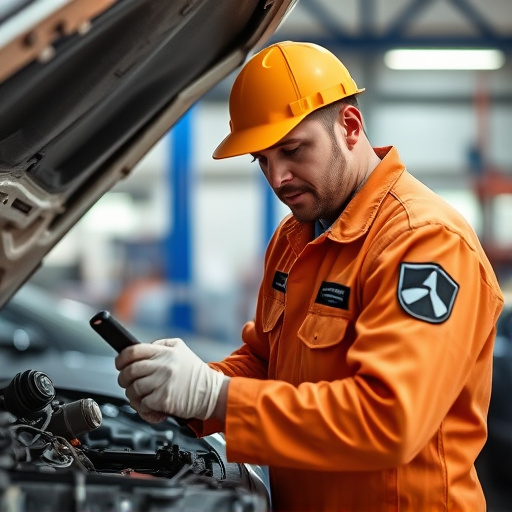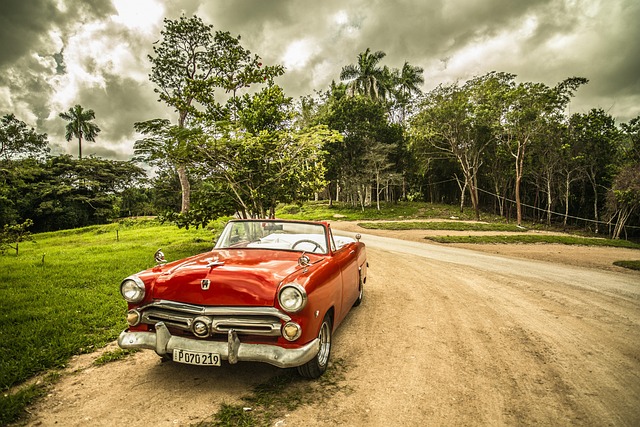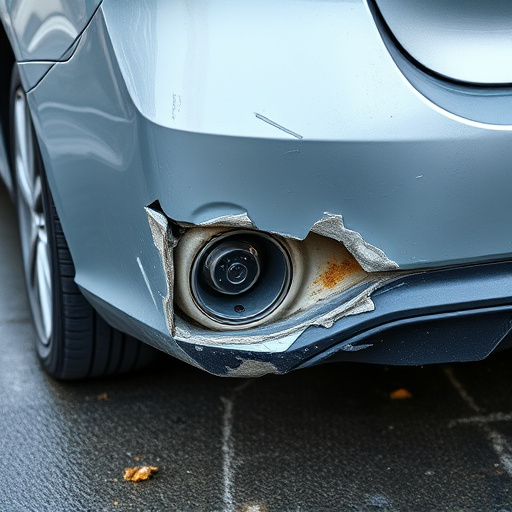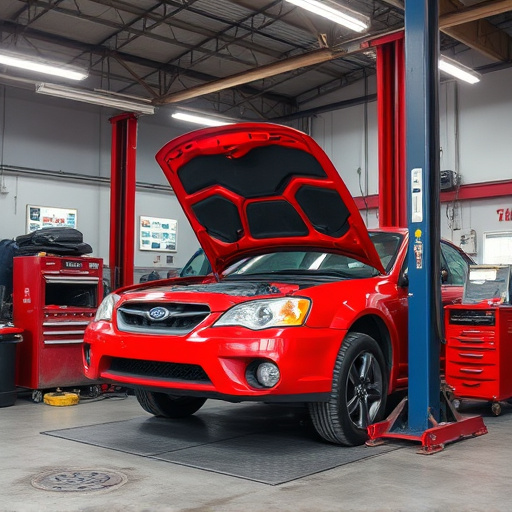Advanced welding techniques, including laser, robotic arc, and TIG welding, are transforming automotive repair, enhancing precision, structural integrity, and aesthetics. These innovations reduce waste, lower costs, and promote sustainability in collision and luxury vehicle repair. Their versatility enables creative problem-solving across diverse industries, from auto components to industrial structures, ensuring high-quality, tailored repairs for fleet and individual vehicles.
Advanced welding techniques are transforming industries by offering unprecedented advantages. This article explores three key benefits: enhancing precision, improving material efficiency, and unlocking new possibilities in design and innovation. By adopting these cutting-edge methods, manufacturers can achieve superior quality, reduce waste, and expand the horizons of what’s possible in metal fabrication. Discover how advanced welding is revolutionizing the way we create and build.
- Enhancing Precision: The Impact of Advanced Techniques
- Material Efficiency: Optimizing Resources Through Welding
- Unlocking New Possibilities: Versatility and Innovation
Enhancing Precision: The Impact of Advanced Techniques
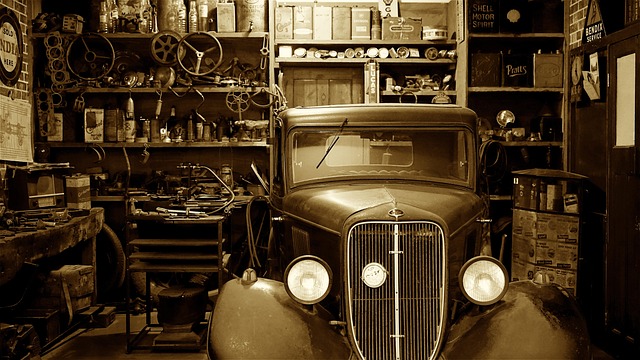
Advanced welding techniques are transforming the automotive repair landscape, particularly in esteemed establishments like Mercedes-Benz repair shops and collision repair services. These innovative methods offer a significant advantage in enhancing precision during the joining process. Traditional welding often suffers from inconsistencies, leading to potential structural weaknesses or cosmetic imperfections. However, advanced techniques such as laser welding, robotic arc welding, and TIG (Titanium Gas) welding address these issues through enhanced control and accuracy.
For instance, laser welding provides precise, high-speed cutting and joining, minimizing heat input to surrounding materials. Robotic arc welding ensures consistent weld quality and repeatability, while TIG welding allows for intricate, strong, and aesthetically pleasing welds. These techniques not only improve the structural integrity of vehicles in car repair shops but also contribute to more efficient collision repair services, ensuring that repaired cars meet the highest standards of quality and safety.
Material Efficiency: Optimizing Resources Through Welding

Advanced welding techniques offer a game-changer approach to material efficiency, optimizing resources in industries such as automotive collision repair and luxury vehicle repair. These modern methods allow for precise cuts, forms, and joins, minimizing waste and maximizing the use of materials. By employing advanced technologies like laser welding or robotic automation, manufacturers can achieve cleaner, more accurate results, reducing the need for additional components to compensate for human error.
This efficiency translates into significant cost savings and a smaller environmental footprint. In automotive painting processes, for instance, efficient welding practices ensure that less material is used overall, leading to reduced scrap rates and lower production costs. Moreover, by minimizing waste, these techniques contribute to a more sustainable manufacturing landscape, aligning with the growing demand for eco-friendly practices in auto body repair.
Unlocking New Possibilities: Versatility and Innovation

Advanced welding techniques unlock a world of possibilities, offering unprecedented versatility and innovative solutions. These cutting-edge methods transcend traditional joining practices, enabling technicians to work with an expanded array of materials and designs. From intricate automotive components to complex industrial structures, advanced welding opens doors to crafting sophisticated creations that were once deemed challenging or even impossible.
This evolution in welding technology has profound implications for various industries, including fleet repair services and vehicle repair. By employing these techniques, professionals can achieve precision and quality in scratch repairs, revitalizing both aesthetic appeal and structural integrity. The adaptability of advanced welding allows for creative problem-solving, ensuring that every project benefits from tailored solutions and exceptional results.
Advanced welding techniques are transforming industries by offering unparalleled precision, material efficiency, and innovative possibilities. These sophisticated methods not only enhance product quality and reduce waste but also open doors to new design concepts and applications. By embracing these cutting-edge practices, manufacturers can elevate their work, stay ahead of the curve, and contribute to a more sustainable future with optimized resource utilization.
